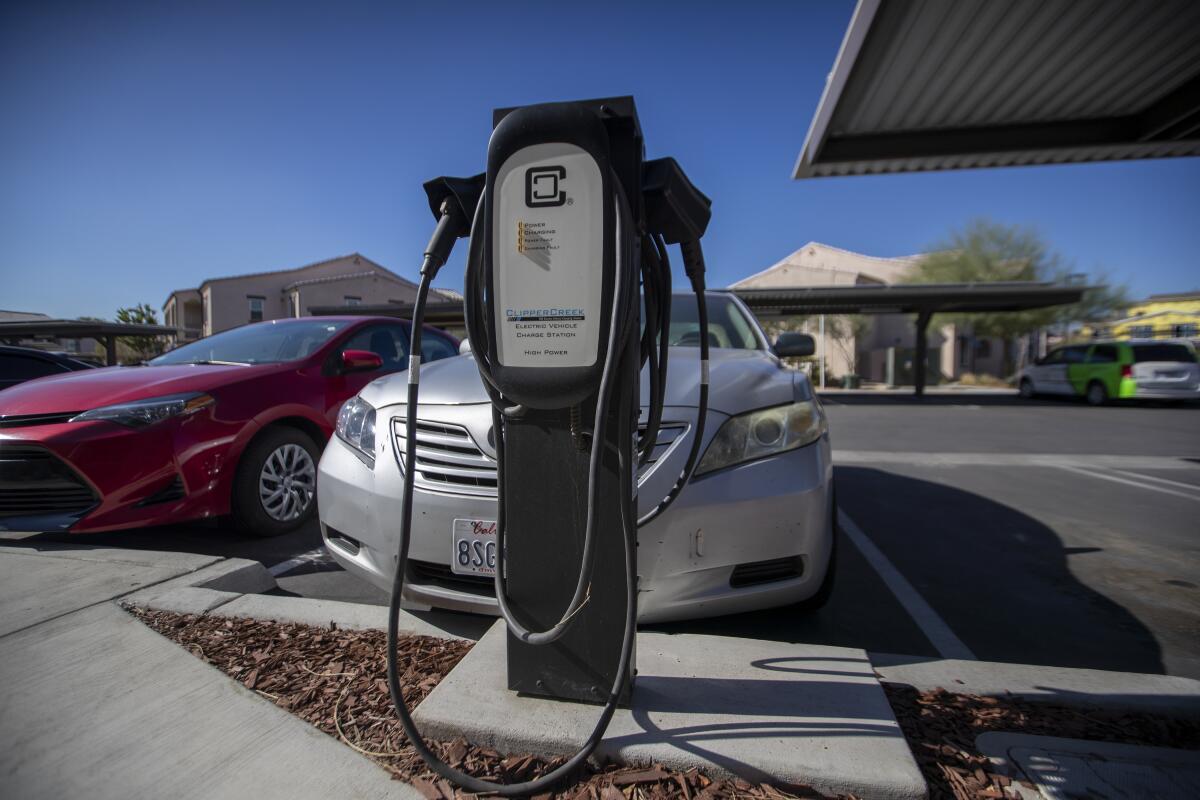Letters to the Editor: EV ownership for renters is impractical. Here’s how to change that

- Share via
To the editor: The points made in the opinion piece about electric vehicle “charging deserts” ring true to me.
About a year ago, I purchased a used electric Smart car for running errands and getting to and from doctor appointments. As a nonhomeowner, I would have to negotiate with my landlord to install a charging station in my garage.
As a result, I nearly always build in enough time to sit for an hour or two — or three, sometimes — at a public charging station.
One possible solution might be to require apartment owners to install a charging station if at least one tenant drives an electric vehicle. That requirement should be subsidized so landlords are not unfairly burdened just because someone they rented to is an EV driver.
Perhaps this would incentivize lower-income households to purchase one of the electric vehicles that are increasingly coming onto the used-car market. This would be a nice equalization against the remaining gas-powered cars that tend to be ubiquitous in financially depressed areas.
Kymberleigh Richards, Van Nuys
..
To the editor: The issue of “charging deserts” made by Britta Gross has a simple solution. As a general point, those who drive fewer than 30 miles per day can usually keep their EV batteries charged by simply plugging into a standard 15-amp outlet.
As the popularity of EV ownership increases and prices decrease, power companies should provide subsidies to the owners of low-income housing to install residential charging stations. Furthermore, the high cost of upgrading electric service in older buildings is a major impediment that could best be offset with the help of state subsidies.
The need for high-powered rapid chargers is almost exclusively limited to those who travel far from home; this infrastructure is concentrated in areas frequented by tourists, shoppers and business travelers, thus their relative absence in residential areas of any income.
The bottom line is this: The more lower-income individuals purchase EVs, the more demand there will be to provide home-charging facilities, which will give added incentives for lawmakers to facilitate the installation of residential chargers in low-income neighborhoods.
Jonathan Kaunitz, Santa Monica
More to Read
A cure for the common opinion
Get thought-provoking perspectives with our weekly newsletter.
You may occasionally receive promotional content from the Los Angeles Times.









